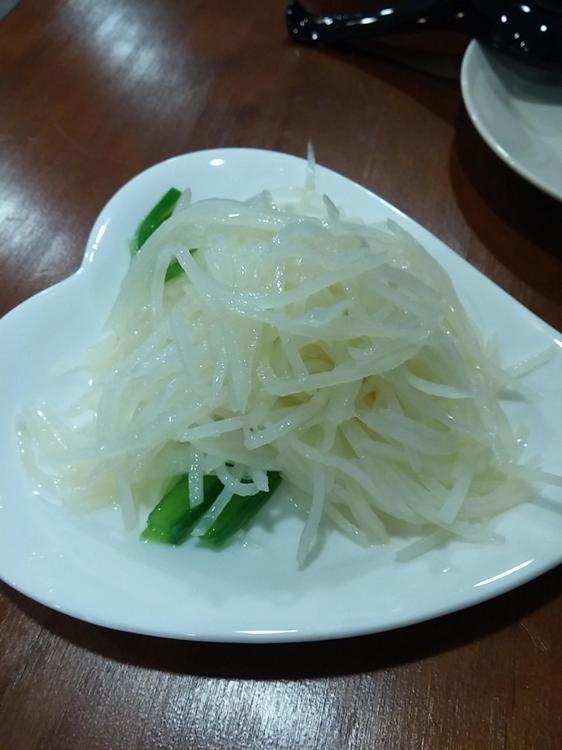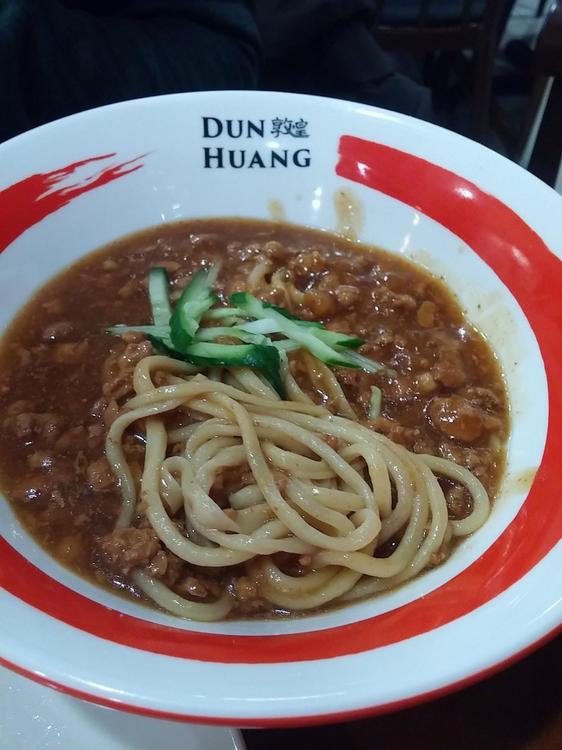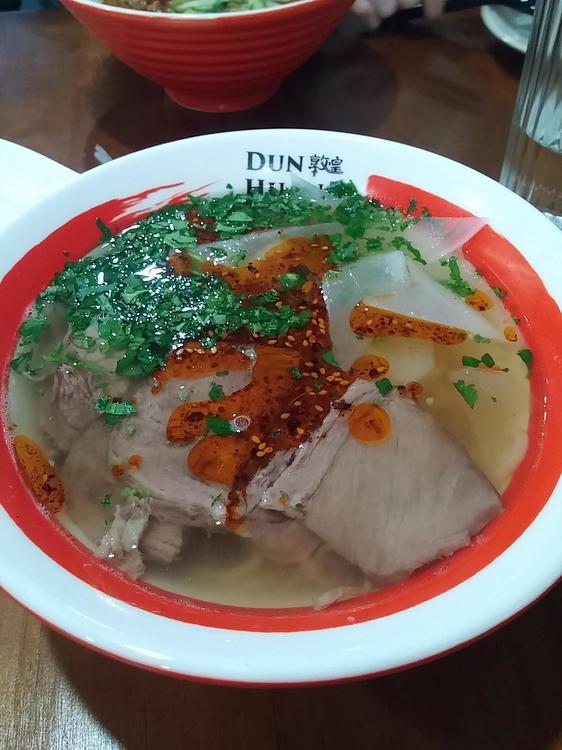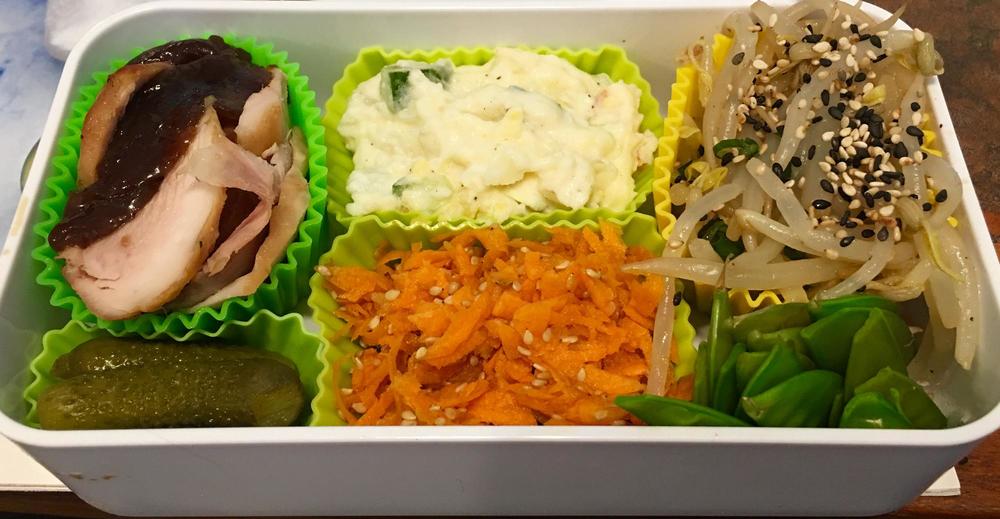
KennethT
-
Posts
6,605 -
Joined
-
Last visited
Content Type
Profiles
Forums
Store
Help Articles
Posts posted by KennethT
-
-
A branch of this mini-chain recently opened in my neighborhood. The service was a bit slow and the waiter barely spoke English and seemed really tentative dealing with us (everyone seated around us was speaking Mandarin) but overall the food was really good and it's a very welcome addition to the 'hood.
Shredded potato salad
Zha Jiang noodles with pork
Signature beef noodle soup
-
 3
3
-
 1
1
-
-
I'm not in the food business, but I think that in many respects, all businesses are the same - it's just the details that change.
To answer your question, I'd ask the following - what does your proposed customer base want?
All consumers, at all price levels, want a perceived value. Those with lots of expendable income may be willing to spend a lot more, but they still want to feel like they are getting a good deal and value for their money.
In general, a dessert-only place has to sell fun and pleasure. No one eats dessert for sustenance or nutrition - you go because you want something tasty enough to overcome any feelings of unhealthiness associtaed with the empty calories - it's all about pleasure and fun - so make the experience of getting the treat fun too!
How commonly found in your area are the items you plan to offer? If they are very uncommon, you could be successful offering a relatively mediocre product just based on the sheer novelty of it. Plus, if most of your consumers have never had a truly great version of your offering, then they will have no frame of reference by which to judge it - other than to say that people know what tastes good - so as long as it tastes good, it doesn't necessarily have to be the best specimen ever.
If your offerings are available elsewhere nearby, how do you plan to differentiate yourself? Cheaper, better quality, novel packaging, novel experience, etc.
Sometimes, it's better to specialize in a few items, rather than having a long menu, especially if you have limited dessert experience or your workers are not very experienced.
Also, try thinking of ways to spin some perceived negatives into positives. For instance, in another thread you were talking about making donuts using waffle batter - rather than trying to pass them off as a true donut, you can market it as something unique - give it a catchy name, some good photos and it could be the next craze so long as it is tasty and different.
-
 3
3
-
-
To me, western broccoli belongs in the same category as corn does to @liuzhou.
-
 1
1
-
-
2 hours ago, Anna N said:
But whatever one uses, sake, sherry or Shaoxing most of alcohol will be driven off in the cooking process. So is it not the underlying taste that is the most important element here? If one is looking for something to bring on a buzz then one can certainly argue otherwise.
My concern of the abv didn't have to do about getting a buzz, but more about the marinating/frying properties. Sort of like adding alcohol to a batter to make it crisper, I didn't know if the alcohol content did anything for the marinade.
-
I think you're right - some friends were going there a few years ago and I was looking for it for them, but all the info I could find was about stores that closed... Too bad, that place was a gem. But I do like your idea of the smaller neighborhood mercados... very easy to find good picnic stuff there...
-
2 hours ago, dtremit said:
I've learned recently that this is extremely common nowadays in Southeast Asia -- where cooking spaces are traditionally outdoors. The "open kitchen" trend has spread to new developments there, but anyone who has ever cooked with shrimp paste knows, doing it in the living room is unthinkable. Hence the closed, "wet" kitchen for serious cooking, behind the open, "dry" kitchen for finishing meals / serving breakfast / etc.
In our next house, I'm hoping we'll have a small, kitchen-adjacent room that I can use sort of like this. I'd build a nice, standard-sized kitchen (with an eye towards resale, as I doubt our next house will be our last one). The "back room" would have lots of open, commercial shelving, an extra fridge/freezer, and stations for baking and batch prepwork.
OP -- your kitchen looks like it's going to be magnificent -- I'm so jealous of your skylight!
I understand this, but whenever I have cooked with shrimp paste, I could smell it throughout my entire apartment and into the hallway... How far away does the wet kitchen have to be?
-
1 hour ago, Anna N said:
Do you have a helper who comes and cleans all those little dishes?!? I can't imagine them not flying around the dishwasher....
-
 1
1
-
-
I haven't been to Barcelona in years, but back then, there was a fantastic store selling small producer jamon iberica de bellota called Jamonissimo. They had hams from the 4 different regions so you could taste the differences, and had some presliced and packed in a vacuum pack to take with you. Good for picnics.
-
I'd agree - from what I've read (and the look of what's in the refrigerator), the Shaoxing is aged, which develops flavors and color (like many Sherry - just not fino). Sake is not typically aged, hence why it is clear. Also, I can't find any reliable info about Shaoxing's abv, but sake is quite high - about 15-20%.
Edit: sake is not typically aged in containers that would impart flavors or colors, like oak barrels...
-
It's amazing to me that the Domenique Ansel in LA has cronuts just sitting around like that... here in NYC, there's still a line for them in the morning, and they sell out every day!
-
 1
1
-
-
3 minutes ago, Anna N said:
I can at least buy sake without salt!
Not in the supermarket!
-
Years ago, before ever traveling to China, I had never made anything that used it. After coming home from Hong Kong, I got on a Chinese food bender and bought a bottle. I think the bottle's label recommends to refrigerate after opening - and it made sense to me as I would refrigerate any wine after opening to delay oxidation. Life got in the way and I stopped cooking very much, and over time the bottle moved slowly to the rear of the refrigerator, where it languished, forgotten.
-
 1
1
-
-
@liuzhou OK - I understand that - alcohol regulations here are a real PITA.... So in your opinion, for me here in the US, would it be better for me to use a dry sherry as opposed to the shao xing that I can get, or just use the shao xing and add less salt?
-
Thanks. It was opened, used very little, then was relegated to the back of the refrigerator where it has remained, hiding. This bottle was really cheap - I got it in one of the markets in Chinatown. I also remember it being not very good when first opened, so I think I'll just toss it and get another.
Do all Shao Xing have salt as an ingredient? What is it supposed to taste like?
-
I just found a bottle of Shao Xing in the back of my refrigerator. I have no idea how long it's been there, but it can't be any younger than 5 years, but I imagine it's quite a bit older.
How long does this last? Does it go bad?
-
5 hours ago, liuzhou said:
When you think how much of China’s cuisine uses the various chilli peppers, it is impossible not to wonder what they did before these were introduced by the Portuguese relatively recently.
I've often thought this about Thai food as well! I remember being on vacation in Thailand, reading some historical piece that was in a magazine provided by the hotel - there were drawings of traditional houses, descriptions of life in that time, and the food - which was wildly different prior to the introduction of the chili.
-
There's a branch of Ippudo in NYC - I loved their tonkotsu ramen, and the texture of their noodles, which rare for NY, they made in-house. They always have a long wait. I only go there once in a very long while now - by my cardiologist's demand!
-
 3
3
-
-
8 hours ago, Toliver said:
Will you leave it like that (drier than expected) or will you add more oil to loosen it up again? Dry, it can be used as a spread, as you suggested. But looser would make it more usable to dip stuff in.
For now I'm leaving as is - most of the time, I would add it as a component to other things - like a dollop to a noodle soup, or add to soy sauce/black vinegar for dipping sauce... so as of now, I don't see the need for extra oil... but that may change as I use it more.
-
 1
1
-
-
-
54 minutes ago, liuzhou said:
Prompted by @Anna N's post in the Dinner topic, I'm bringing this one forward in the list to be gone through.
Perilla frutescens
Perilla comes in two main varieties: P. frutescens (var. frutescens), often called Korean perilla; and Perilla frutescens var. crispa also known as shiso in Japan. The plant, a member of the mint family, probably originated in China. It was first mentioned in Chinese literature around 500 AD and was introduced to Japan in the 8th or 9th centuries.
We get both varieties, and they come in various colours: green; purple; and purple and green. What we get most here is the purple/green. Known in Chinese as 紫苏/紫蘇 (Mand: zǐ sū; Cant: zi2 sou1) in which the first character means 'purple'..
The leaves are most commonly stir-fried with garlic. It is also pickled in China, like kimchi. The seeds are used in in both Japanese and Korean cuisines, but I've never seen them on sale here.
I loved the purple/green perilla that would be featured in the herb baskets in Saigon...
-
OK - just had a chance to taste it. By itself, it has a strong flavor of fried garlic, and then has a background heat that comes through over time. Oddly enough, all the oil has been absorbed, and it basically just looks like a Chinese tapenade!
-
 1
1
-
-
1 hour ago, Anna N said:
Not quite sure of the difference between shiso and perilla. Thank you kindly for your offer but I can kill even artificial plants.☹️
shiso is a variety of perilla
-
 1
1
-
 1
1
-
-
13 hours ago, Toliver said:
Is there any heat to it?
It looks like a chili oil a local Chinese buffet used to serve. I would dunk my egg rolls in it or anything else that was deep fried and crunchy.
Can you post the recipe? I'll put it on my list of things to make when i retire.

It's about 2 heads of garlic, and a 3" knob of ginger both minced finely, and a small handful of fermented black beans, roughly chopped. These are slowly fried in 1-1/4 cup (maybe a splash or two more) of peanut oil. You have to do this part slowly so the garlic doesn't burn - but after about 30 min. it gets nicely browned. Then I added a cup of sichuan chili flakes, a hefty pinch of salt and a hefty pinch of sugar, let fry for maybe 5-10 minutes, then added a few splashes of soy sauce, then let cool. I actually haven't tasted it yet (it's been in the refrigerator to let the flavors meld), but I'll send out an update after I do to give a verdict. But it does look like many of the chili oils I had in China or in some down home places in Chinatown in NYC.
-
 1
1
-
-
I've never seen such large open bins of flour before. Evidently sanitation is not high on their list of priorities!
-
 1
1
-







Lunch! What'd ya have? (2018)
in Cooking
Posted
This is a new addition to our neighborhood...